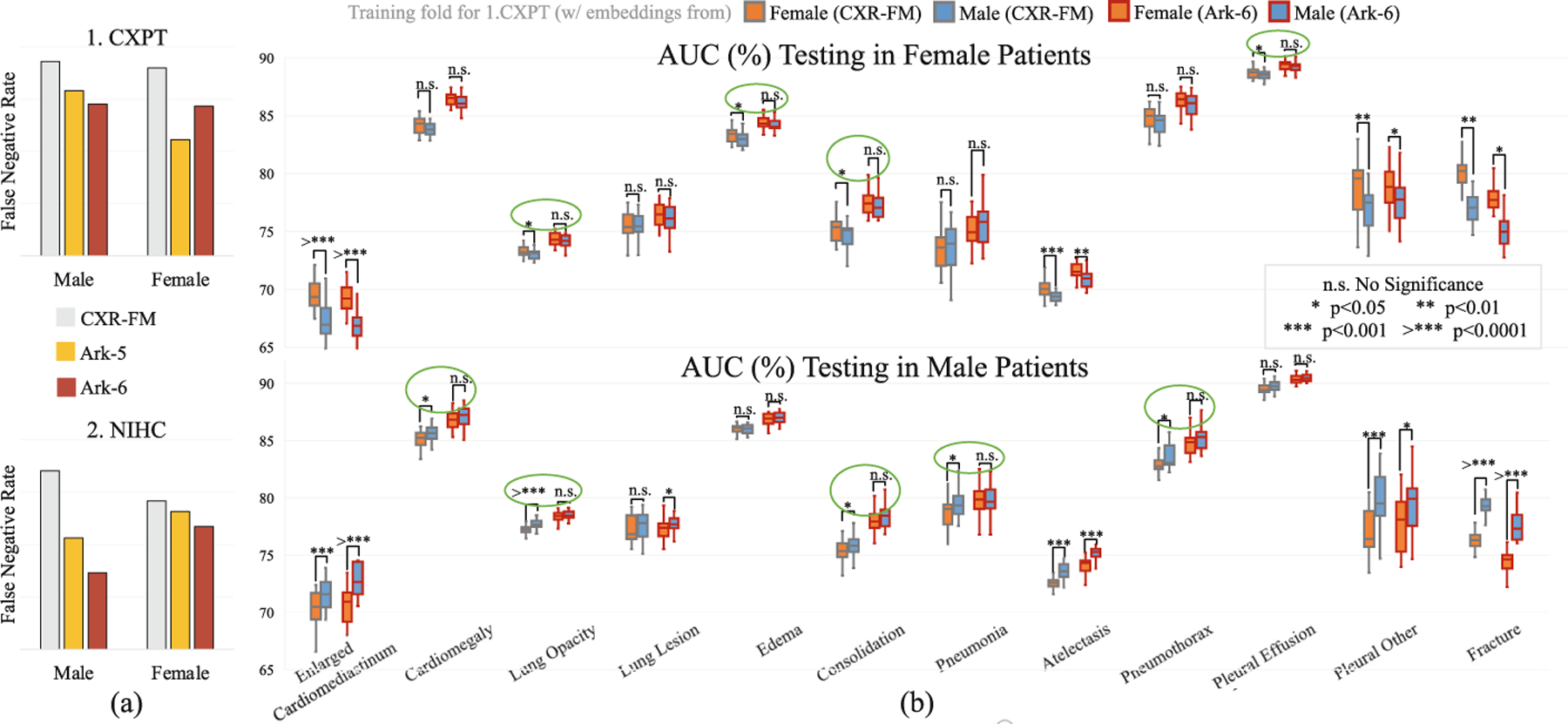Fig. 3.

Ark models are compared with Google CXR-FM as regards false-negative rate (FNR) and gender-related bias. (a) Ark models show lower FNRs, indicating superior underdiagnosis mitigation. (b) Ark-6 demonstrates greater resilience to gender-imbalanced data. Gender bias is characterized by a significant drop in performance when training and test data are of the opposite gender, compared to when they are of the same gender (e.g., the orange whisker boxes are lower than the blue boxes in the lower-part (b)). Each green circle indicates a lung disease with gender bias by CXR-FM, as it performs differently between training on male and female data. But Ark exhibits a more robust performance, showing no significant difference on gender-segregated data.
